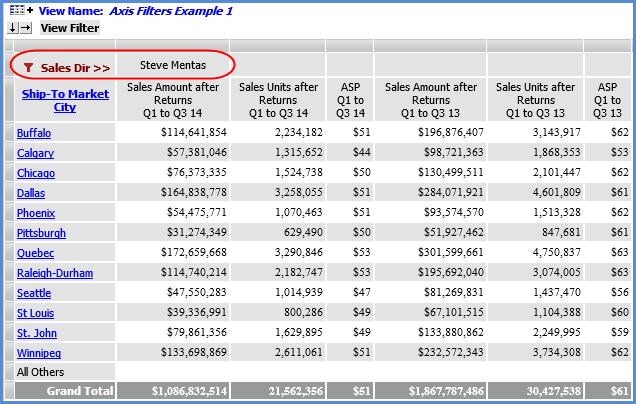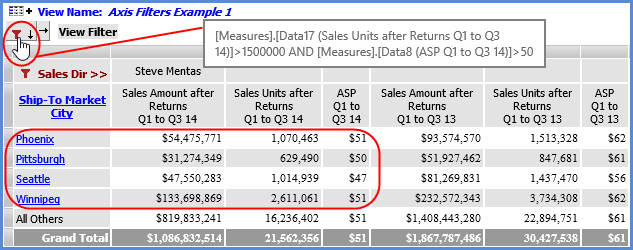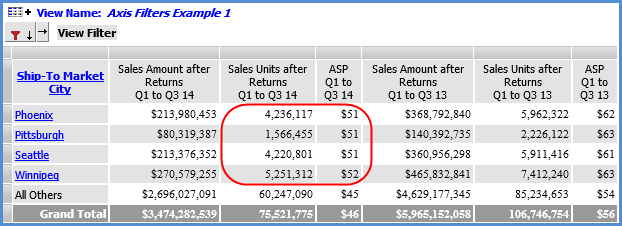
Axis filters tend to be used in views where no levels exist on the axis opposite from the axis filter. That tendency is due to the basic nature of axis filters -- they take into account overall measure item totals for objects (level members) that are on the same axis as the axis filter. Also, the axis filter disregards any filtering impact that levels on the opposite axis have on the measure items and objects. The example that follows shows what to expect from an axis filter in a view with levels on the axis opposite the axis filter.
The following view has levels on rows and columns. Additionally there is a filter on the level in columns that returns one member of the Sales Director level.

An axis filter is going to be applied to the row axis. The filter is meant to return members from the currently drilled to level, Ship-To Market City, that meet the following conditions:
Sales Units after Returns Q1 to Q3 14 that are greater than 1,500,000
ASP Q1 to Q3 14 that are greater than or equal to $50
Here is the view after the axis filter has been applied. The Ship-To Market Cities that meet the axis filter conditions are Phoenix, Pittsburgh, Seattle, and Winnipeg. Keep in mind that the axis filter disregards the filter effect that the Sales Director member has on the measure items and rows. The axis filter considers the overall measure item totals for members of the Ship-To Market City level. If you were to hide the Sales Director level, you would see why these four cities were returned -- their overall measure item totals meet both of the measure item conditions that were specified in the axis filter (see the second image that follows).

Here is the view with Sales Director hidden. You can see that both Phoenix and St. Louis Ship-To's overall have more than 1,500,000 sales units after returns for Q1 to Q3 of 2014 and overall have average selling prices greater than or equal to $50 for Q1 to Q3 of 2014.You can see that Phoenix, Pittsburgh, Seattle, and Winnipeg each have overall more than 1,500,000 sales units after returns for Q1 to Q3 of 2014 and each have overall average selling prices greater than or equal to $50 for Q1 to Q3 of 2014.
